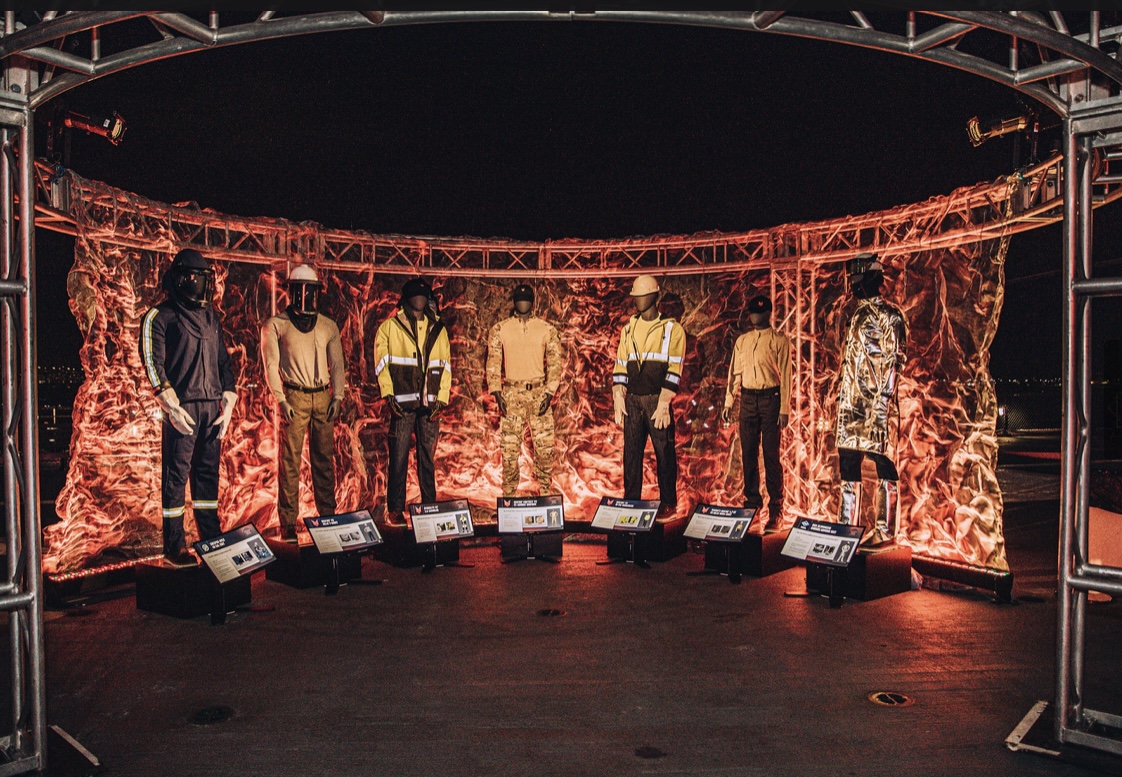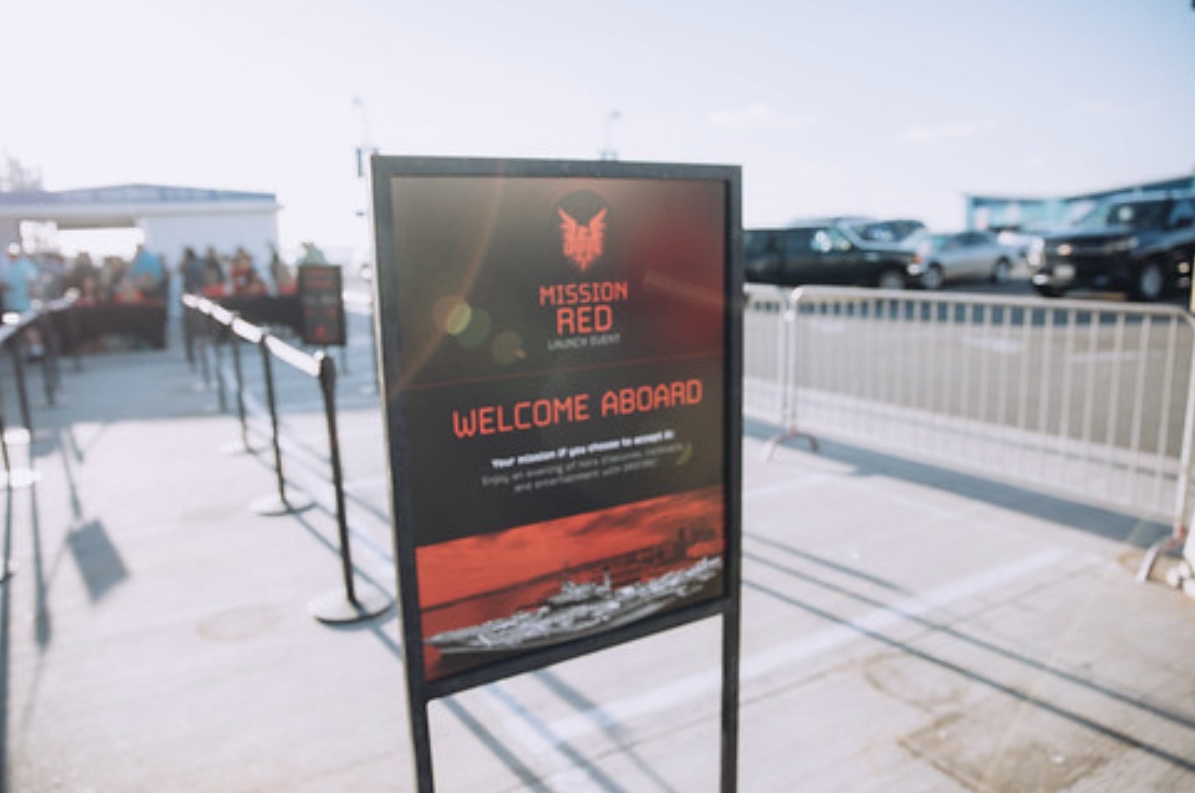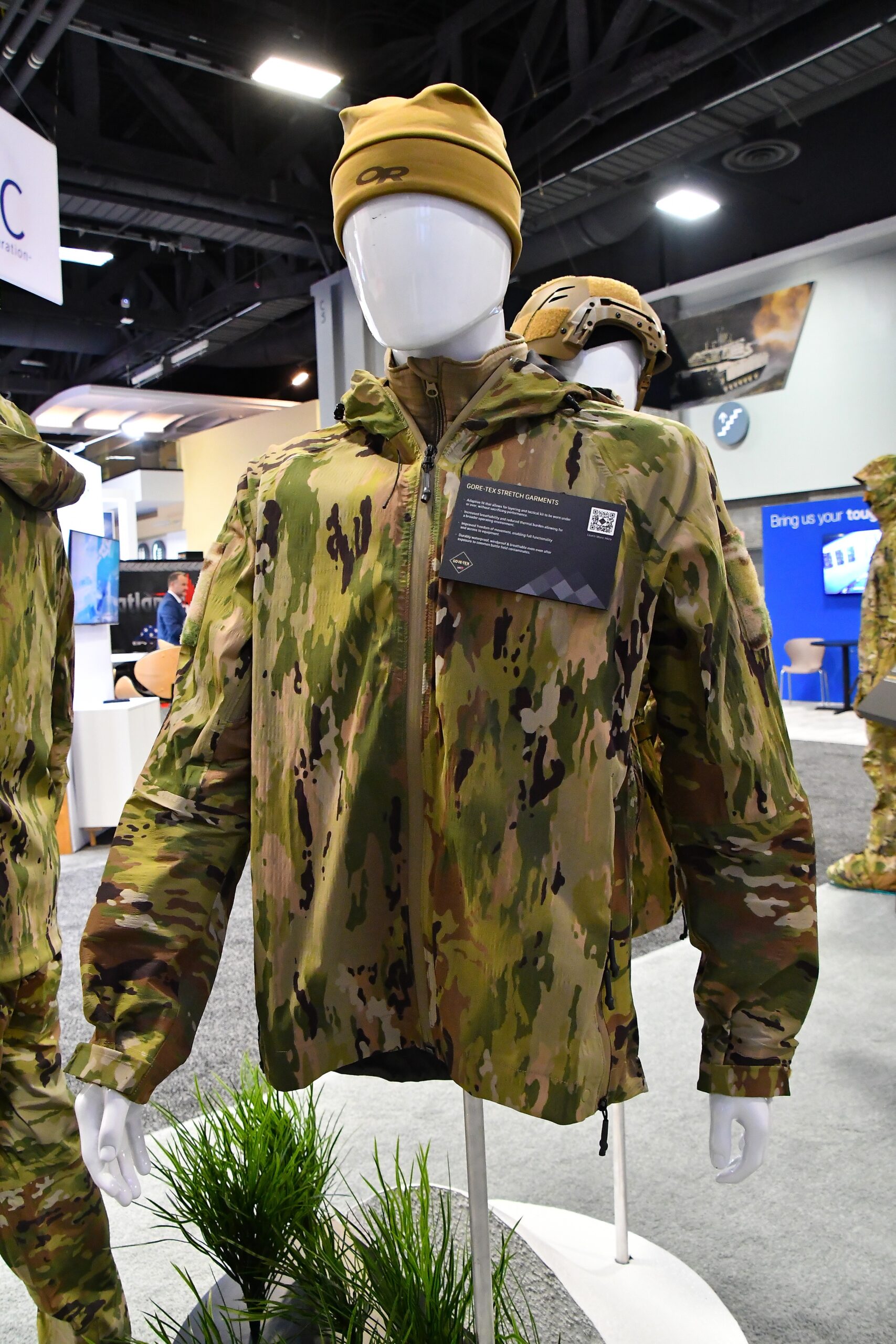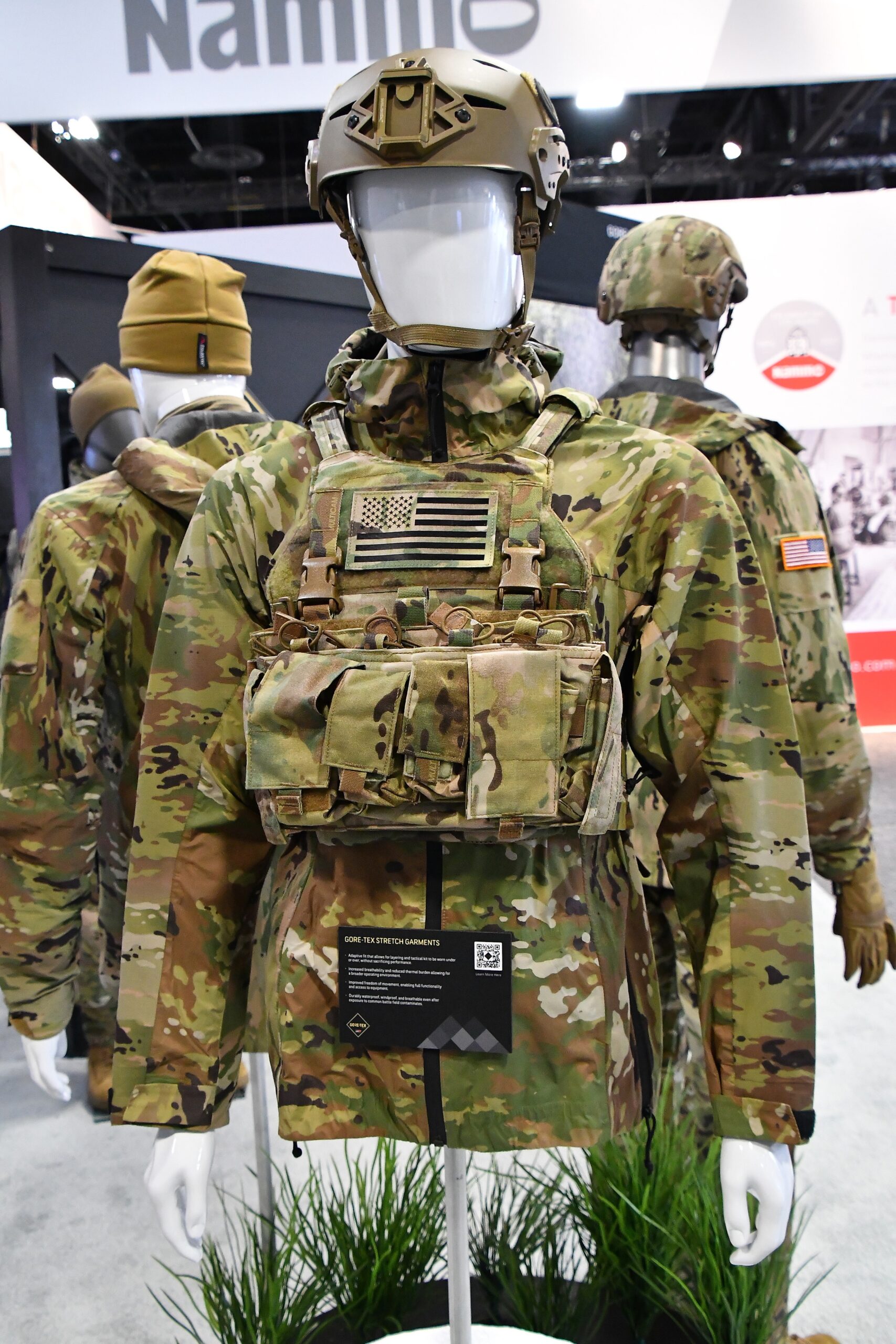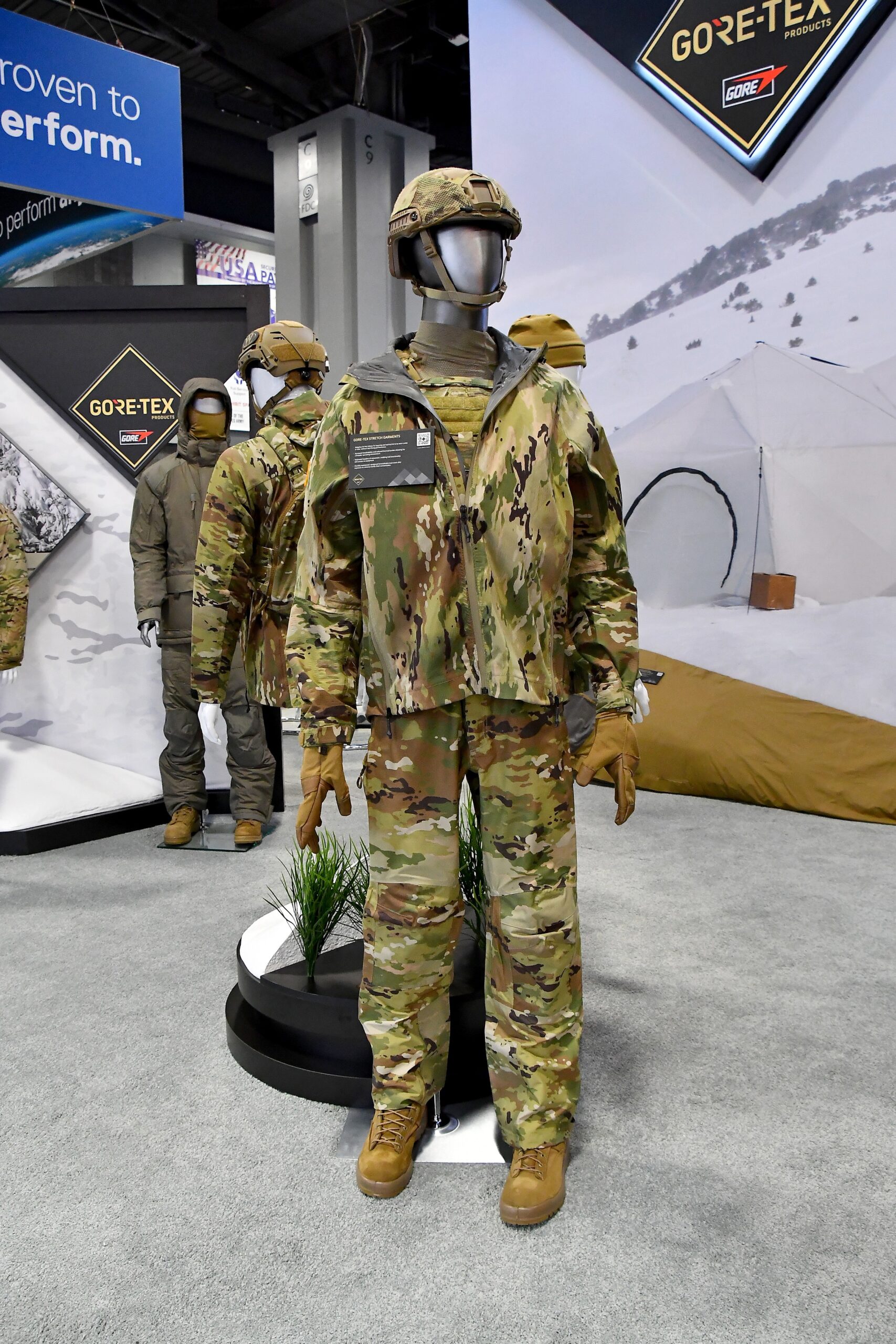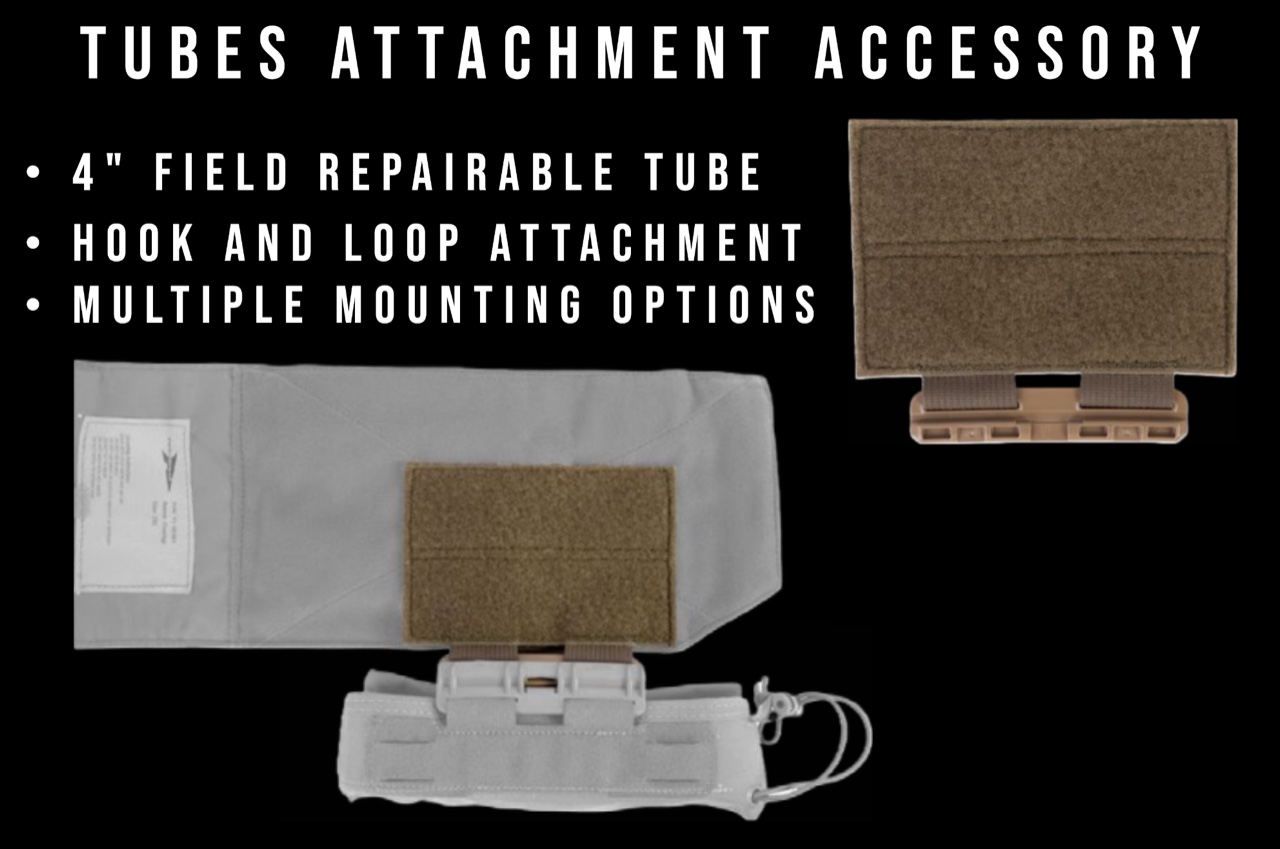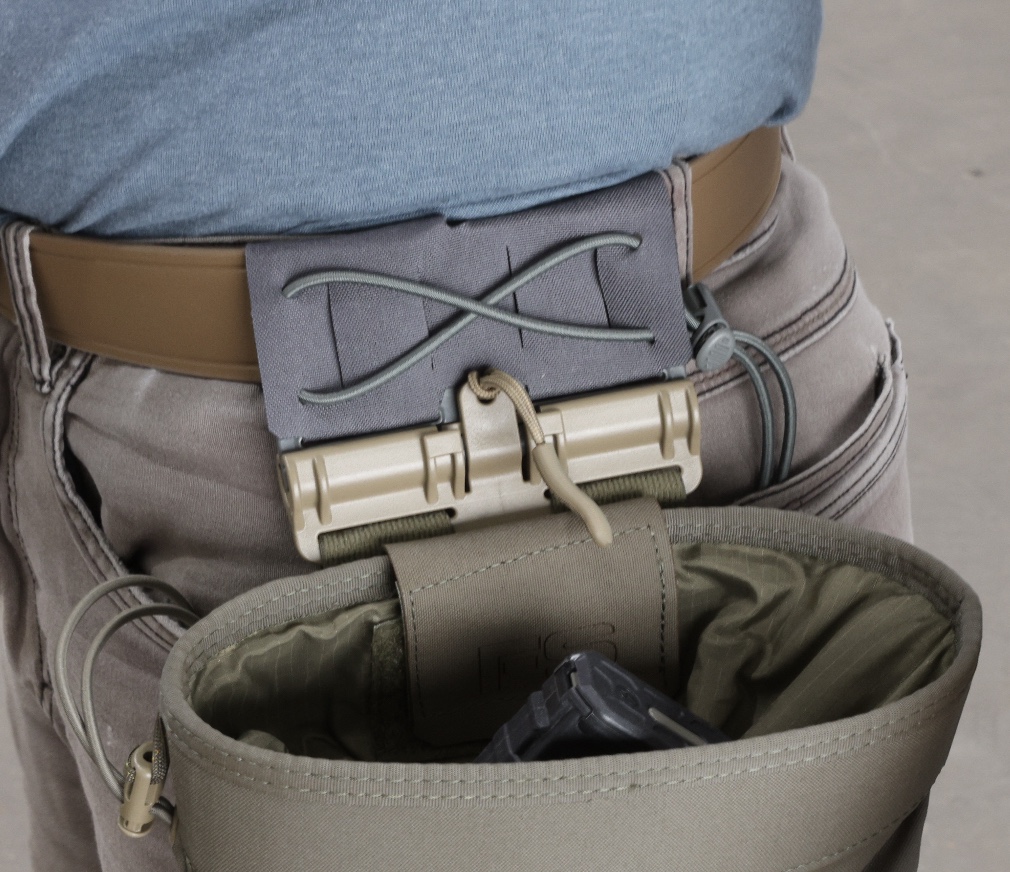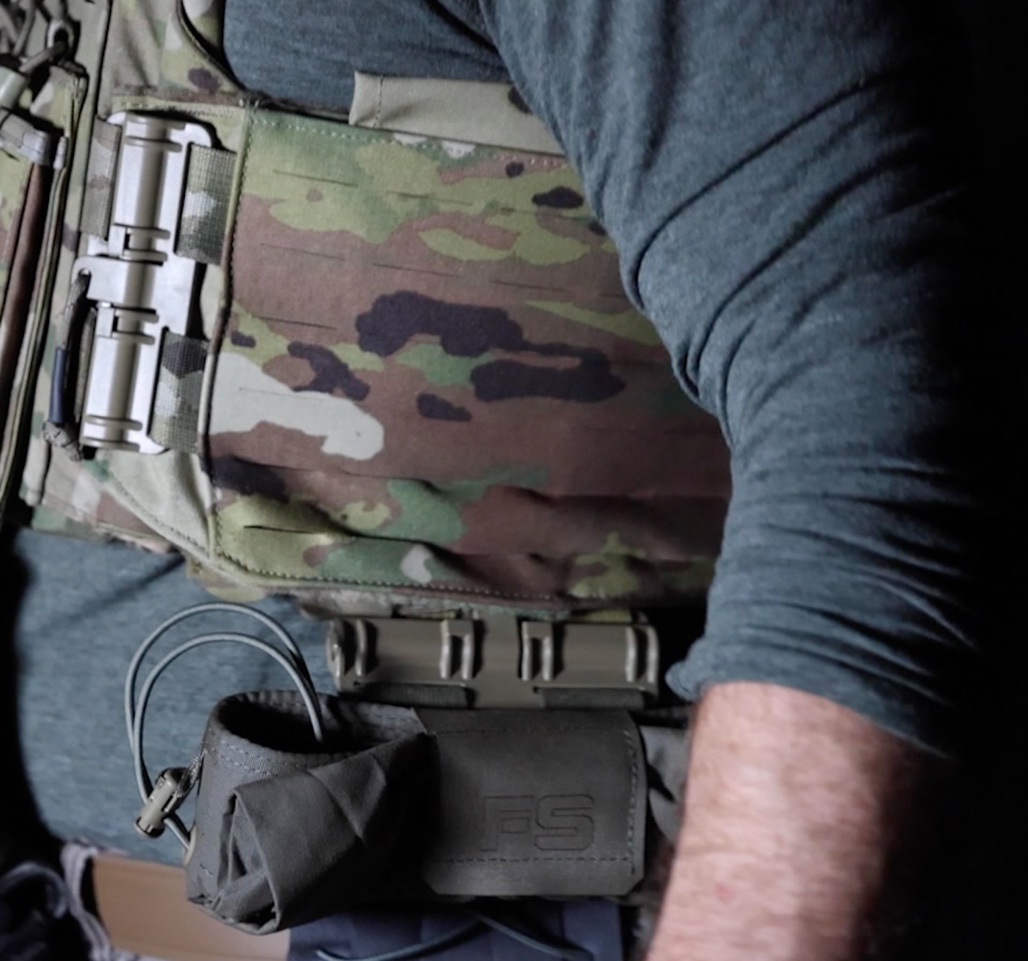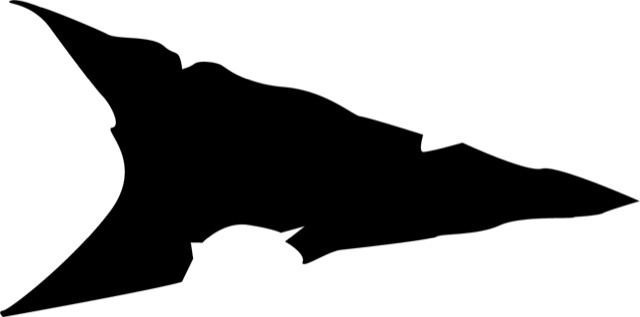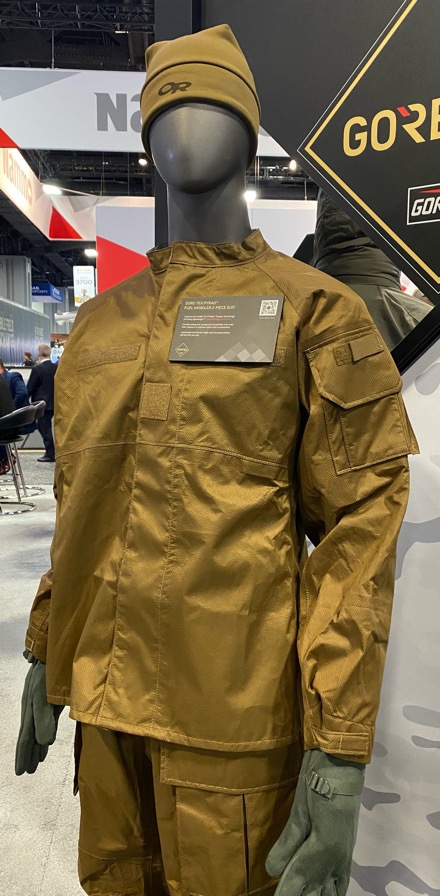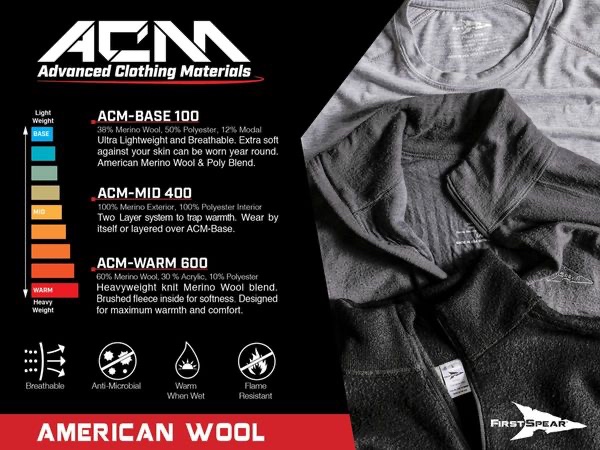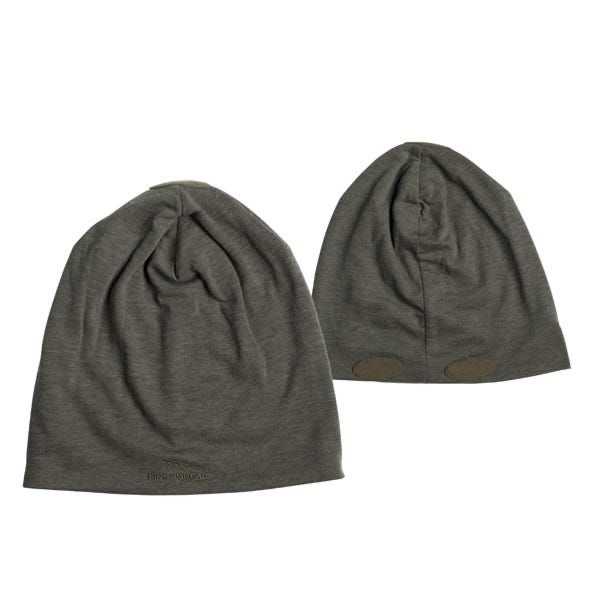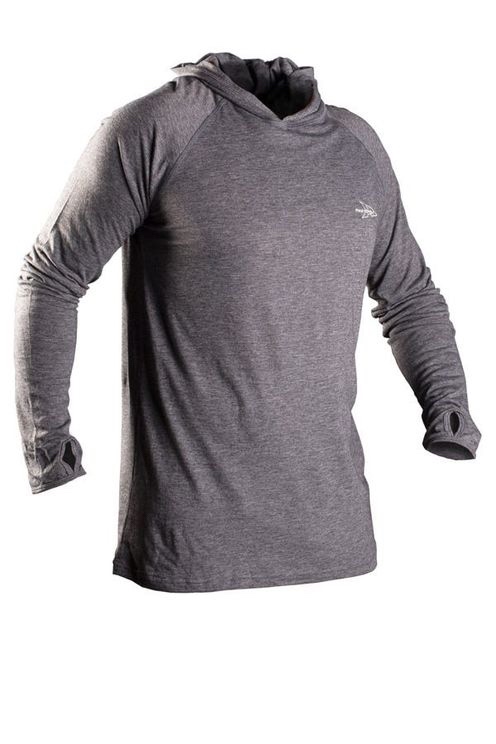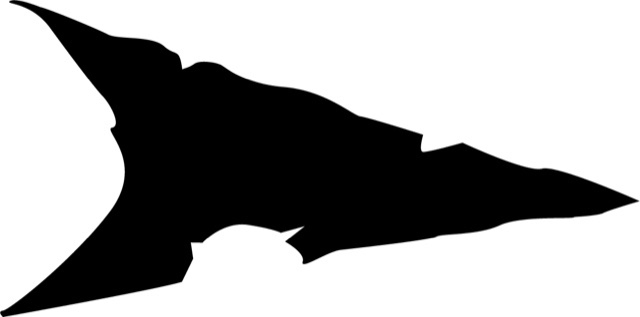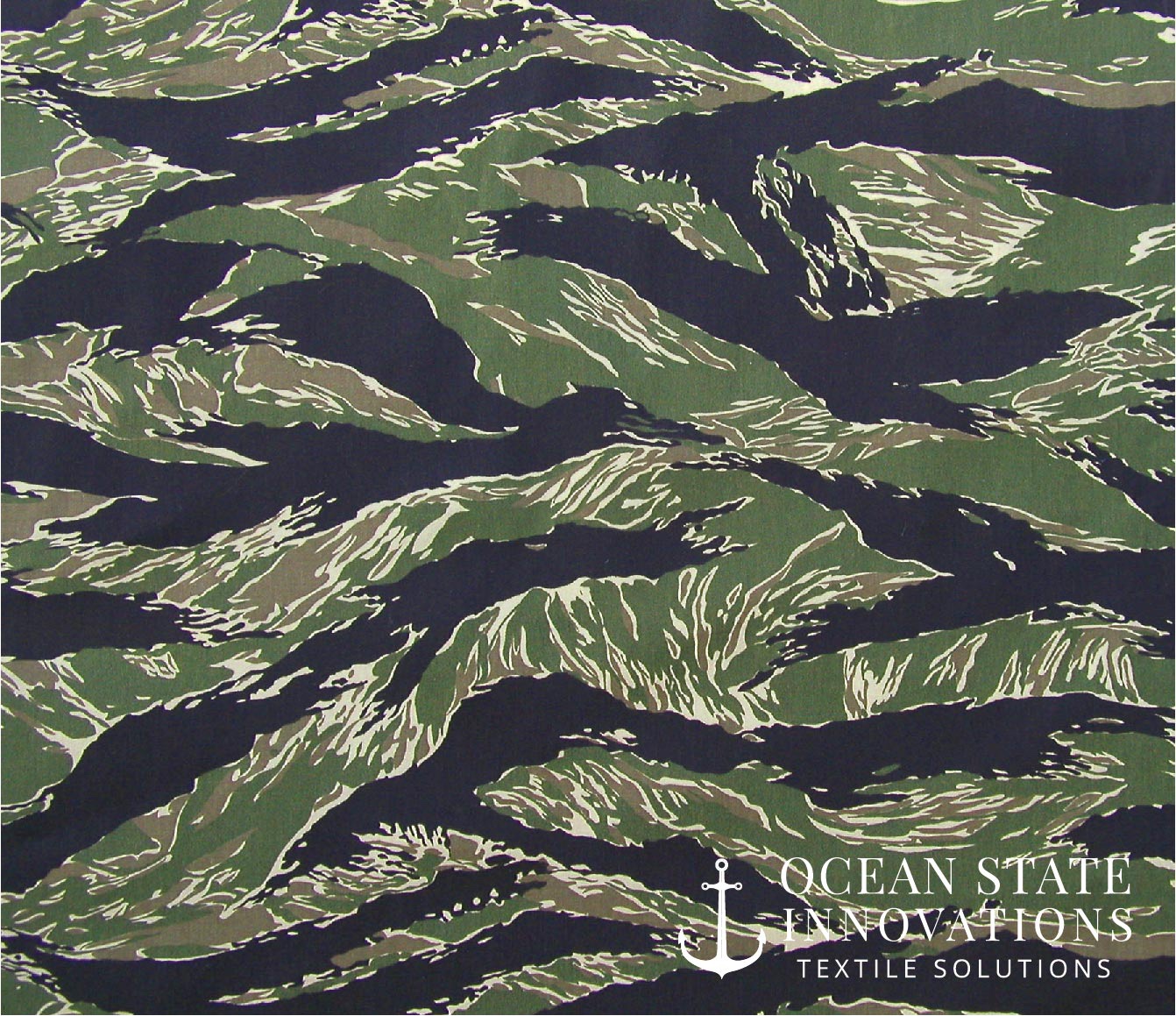Elkton, MD, (September 2022) – W. L. Gore & Associates will be highlighting its defense products and technology intended to protect and support the Armed Forces in the most extreme and unpredictable situations. Products using GORE-TEX Product Technology, GORE-TEX THERMIUM™ Insulation, GORE-TEX Stretch Product Technology, GORE-TEX PYRAD® Product Technology, and CHEMPAK® Product Technologies by GORE-TEX LABS will be on display at the GORE-TEX Professional booth #3609 during AUSA October 10 – 12, 2022 at the Walter E. Washington Convention Center in Washington, DC. Among the products on display will be the cold and wet weather protective garments soon to be issued to the newest Army Division, the 11th Airborne Division based in Alaska. This Cold and Wet layer uses GORE-TEX Product Technology and is a key component of the Cold Temperature and Arctic Protection System (CTAPS).
The Army selected GORE-TEX Product Technology for its proven ability to provide head-to-toe protection for the harshest conditions that warfighters experience. The 3-layer waterproof breathable jacket and pants will be part of the initial issue of the Cold and Wet layer of CTAPS and provide the Army warfighter with tested waterproof, windproof, breathable protection to deliver a decisive edge for extended operations in extreme conditions. The CTAPS program objective is to improve the Soldiers’ survivability, mobility, and lethality potential in the fewest number of clothing layers with increased utility that allow Soldiers to configure the clothing protection to match their activity in any environmental conditions from -65 to 45F.
GORE-TEX THERMIUM™ Insulation leverages silica aerogel – the world’s best solid insulator – to provide unparalleled warmth without adding bulk. GORE-TEX THERMIUM™ Insulation can be used to provide a fully insulated cold weather boot, as deployed in the Army Cold Weather Combat Boot Program (-20F to +20F), or strategically integrated into a specific area to extend the temperature utilization range of the combat boot like in ALTAMA APEX boot.
ALTAMA APEX boot also showcases our most breathable GORE-TEX laminate, and a new Michelin sole to offer the most versatile combat boot that is suitable for all-season wear.
GORE-TEX Stretch Fabric Technology combines the highest level of protection with optimized comfort to deliver protection in the most demanding environments. Building on the recognized performances of durable waterproof, windproof, and breathability, GORE-TEX stretch fabric technology offers additional benefits: reduced thermal burden, high agility and mobility, and improved equipment integration. This is achieved through an adaptive fit that reduces air gaps and leads to a more optimized design with less bulk. The fabric also delivers high flexibility in cold climates and noise reduction. The stretch ePTFE membrane technology enables the design and construction of garments to have a more tailored fit, which improves the garment’s evaporative resistance and increases breathability by 25%. At the GORE-TEX booth, visitors will see Stretch garments displayed under and over body armor/kit to demonstrate this evolutionary laminate capability in a breathable, packable, and lightweight Cold and Wet layer.
Garments designed with GORE-TEX PYRAD® technology provide heat, flame, and flash-fire protection for defense personnel. To highlight this technology at AUSA, the GORE-TEX booth will display a burned garment side-by-side with a non-burned garment. Gore will also speak to the versatile technology that offers the durable waterproof, windproof, and breathable protection you would expect of GORE-TEX products, while also providing some of the lightest weight, low bulk, flame-resistant garments on the market. Building on Gore’s history of leveraging technology and science to improve comfort and functionality, GORE-TEX PYRAD® Fabric Technology advances performance while maintaining protection. Products made with GORE-TEX PYRAD® Fabric Technology are breathable, lightweight, and flexible, and offer improved comfort during the most demanding tasks as demonstrated in the Army’s Fuel Handler Suit which will be on display. The fabrics also pick up less water and dry faster than alternative flame-resistant fabrics.
Exposure to hazardous chemicals and biological substances can be life-threatening for warfighters. To provide protection, lightweight CHEMPAK® Fabric Technology by GORE-TEX LABS guard against toxic industrial chemicals, non-traditional and chemical warfare agents, and biological and radiological particulate hazards. During AUSA, learn how two material technologies, CHEMPAK® selectively permeable fabric by GORE-TEX LABS and CHEMPAK® ultra barrier fabric by GORE-TEX LABS, are engineered to meet specific user needs based on unique mission sets.
